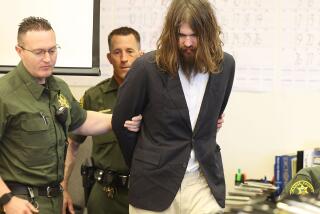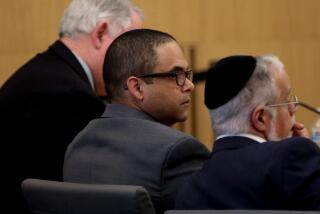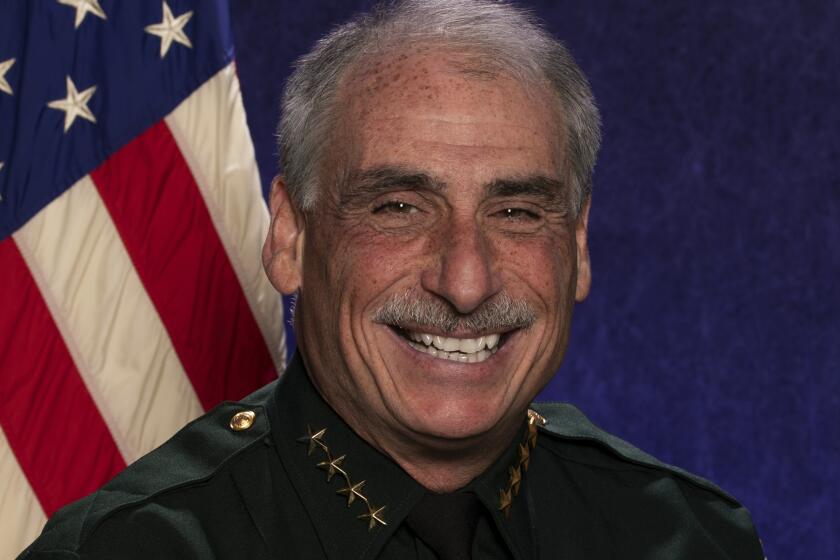Analysis Backs Jury in Rodney King Trial
Given the endless armchair deliberations in magazines during the so-called Rodney King trial and the fury directed at the criminal justice system after it, it’s odd that little attention has been focused on the verdict after things calmed down.
In its last issue, American Lawyer stuck its neck out. In a detailed critique of the trial, Roger Parloff reluctantly conceded that he probably would have voted with the jurors.
In the September issue, D. M. Osborne goes one step further after conducting 40 hours of interviews with seven jurors and two alternates. Her richly detailed day-by-day narrative captures both the cold rationality and the emotionally charged undercurrents that tore at them.
When they first sat down to hear the evidence against the four police officers accused of assault with a deadly weapon and use of excessive force against King, Osborne writes, most jurors believed that they would convict at least some officers on at least some counts.
But after “scrupulous and systematic review of the evidence” and hearing 78 pages of instructions from the judge, their views changed.
The deliberations, as presented in the article, are fascinating. The jurors, for instance, didn’t believe the testimony of Theodore Briseno--who said he had tried to stop his fellow officers--and were inclined to convict him on the assault charge.
Then someone suggested that they pass around Briseno’s boots, which would have been the deadly weapon in question. Amazed at how light the boots were, the jurors decided they couldn’t have killed King. After repeatedly viewing the videotape, they decided that Briseno hadn’t even stomped on King’s head and neck in the manner described by the prosecution.
Officer Lawrence Powell came closest to conviction. Osborne describes one juror’s reaction, after voting to acquit him on charges of assault with a deadly weapon:
“ ‘I really wanted to find him guilty,’ says Sokoski (a pseudonym), his eyes brimming with tears. ‘And yet I had to admit, not only to the other (jurors) but to myself--which was harder--that I couldn’t find him guilty because of reasonable doubt.’ ”
The jury finally deadlocked on the second count against Powell, with three voting that he did, under color of authority, use unnecessary force in arresting King.
It’s a reflection on the complex and subjective nature of law that this same issue of American Lawyer features readers’ letters in response to Parloff’s previous story and his reiteration (in self-defense against one letter) that the jury did the right thing in its microscopic evaluation of the evidence and adherence to standards of reasonable doubt.
Osborne, on the other hand, repeatedly hints that the jury may not have seen the forest for the trees.
She questions, for instance, the jury’s decision to discount considerable eyewitness testimony that was not clearly corroborated by the videotape.
But the jurors’ view of the case was colored, she says, by “their reverence for police officers as guardians of the social order.”
In addition, “the jurors’ low regard for the likes of Rodney King--a paroled felon, driving drunk and resisting arrest--made it inconceivable that they could sympathize with him as the victim of an alleged crime.”
She does not, however, align herself with those who so easily, and with so little evidence, would convict the jury of racism.
” . . . Biases--not clearly linked to race--seeped into their decision-making,” she says.
Osborne ends the article by quoting a juror who, as do other jurors, stands by her decision:
“If (people) will condemn these verdicts, maybe we should just open the prison doors and let all those people out. Because if this is wrong . . . then you have to condemn the whole system.”
Judging from the painful and flawed--but essentially honest and intelligent--process Osborne describes, a better system will be hard to find.
REQUIRED READING
* Don’t worry, California’s environment is safe and sound.
Believe that? Well, maybe you’d like to buy some swampland in Florida.
Problem is, there ain’t much swampland left in Florida. Or bog land left in Connecticut. Or marshland left in California.
When this country was born, 220 million acres of such wetlands let fish spawn, shellfish grow, birds nest and pollution be naturally filtered from water and air. Now there’s less than half as much acreage, and only 9% of California’s historic wetlands remain.
As the October National Geographic tells it, the story of America’s vanishing wetlands is a whole lot scarier than the Swamp Thing.
* Remember the summer’s political conventions, when the flaks avoided the issues by pumping out all that schmaltzy blather on little Billy and little Georgie, the heroic all-American boys?
The current Newsweek does the same thing. And your response is likely to be the same: “Hey! Whaddya think we are, a bunch of 9-year-olds?”
In this case, the answer is yes. This week’s Newsweek does a “just for kids” election package that combines Nickelodeon-style graphics and no-nonsense prose to give elementary and middle schoolers an engaging and impartial look at Campaign ’92.
Even with the full-page Where’s Waldo? puzzle, it’s as sophisticated an analysis of the presidential race as most televised accounts.
* Surely there are sociologists or anthropologists at academic think tanks somewhere who do nothing but pore through the annual Runner’s World shoe buyer’s guide issue to gain insight into the world economy and state of Western civilization.
What does it mean, for instance, that there are now shoes with little twisty disks instead of laces and others containing computerized red lights in their heels?
Does the advent of “propulsion plate systems” and “ground reaction inertia devices” in what were once called sneakers mark the zenith or nadir of a culture?
* The media abounds with stories about vanishing and endangered species. But languages disappear too. The September / October Santa Barbara Magazine offers a too-brief, wistful story on Mary Yee, the last hope for the survival of the spoken language of the Barbareno Chumash Indians.
* This election has taught most everyone the definition of policy wonk-- a candidate who loves the nuts and bolts of issues.
But how many readers know the meaning of de-Keatingizing?
That and other terms in the public relations world’s new vocabulary are explicated in the cover story of the September/October Columbia Journalism Review: “Is the Press Any Match for Powerhouse P.R.”
According to the articles, a few tricks of the public relations trade include:
* Undermining the credibility of journalists who may be critical of your client--a tactic that hotshot firm Hill & Knowlton allegedly used against Time magazine reporter Richard Behar when he went after their client, the Church of Scientology.
* Planting Op-Ed pieces that cast a favorable light on a client--a tactic that seemed to work for Oliver Stone’s film “JFK” and the image-anxious government of Columbia.
* De-Keatingizing (named after savings and loan swindler Charles Keating) the elected official your client hopes to co-opt, by either compiling or concocting a body of evidence to convince reporters that his vote is in the public interest.
Read this story carefully, and then read (and watch) everything else accordingly.
More to Read
Sign up for Essential California
The most important California stories and recommendations in your inbox every morning.
You may occasionally receive promotional content from the Los Angeles Times.










